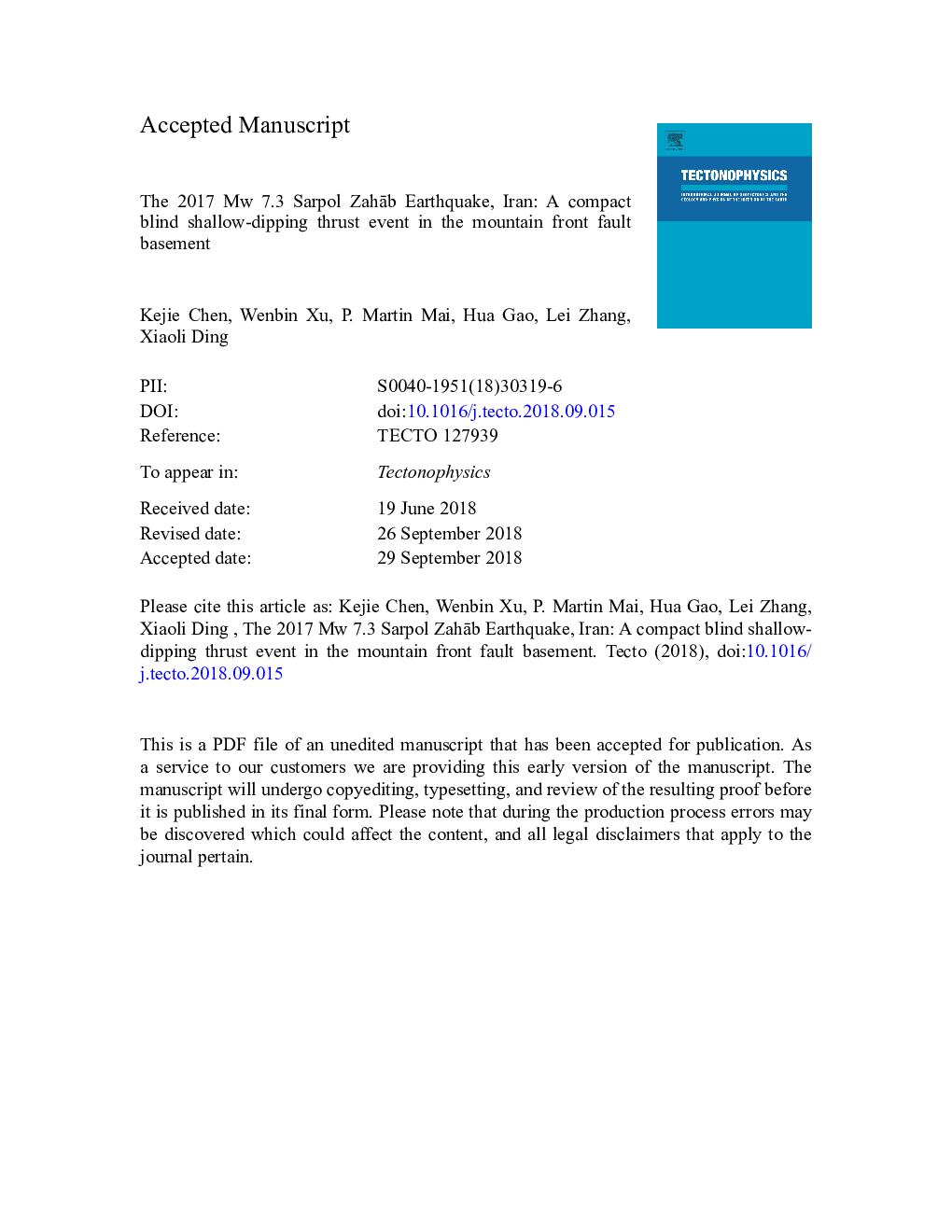| Article ID | Journal | Published Year | Pages | File Type |
|---|---|---|---|---|
| 11001899 | Tectonophysics | 2018 | 20 Pages |
Abstract
The 12 November 2017 Mw 7.3 Sarpol ZahÄb earthquake is one of the largest events to have occurred in the north-western Zagros fold-and-thrust belt during the instrumental period. We use teleseismic and synthetic aperture radar data to study the earthquake source parameters, rupture process and active tectonic characteristics of the event. We find that both data sets individually produce remarkably similar slip distribution, indicative of buried faulting that is consistent with the lack of significant surface rupture. Through the joint inversion of satellite radar and teleseismic data, we find that the rupture propagated rapidly (~3.2â¯km/s) and asymmetrically along strike to the south, but relatively slowly (~1.5â¯km/s) in the updip direction, and formed a single large-slip asperity with a peak slip value close to 5â¯m. Given the regional tectonic context of the distribution of known faults and lithologies, we suggest that the maximum slip is either located in the lowest sedimentary cover or the uppermost basement of the Mountain Front Fault.
Keywords
Related Topics
Physical Sciences and Engineering
Earth and Planetary Sciences
Earth-Surface Processes
Authors
Kejie Chen, Wenbin Xu, P. Martin Mai, Hua Gao, Lei Zhang, Xiaoli Ding,
